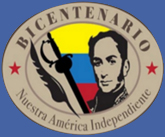Venezuela has 1,346 species of birds recorded to date. This figure represents roughly 42% of the total number of birds varieties in South America and 14% of the world total. As a comparison we can mention that in the whole of North America (US and Canada) there are only 900 species of birds reported. So it is no wonder why our country has often been called "A bird watchers paradise". From this Venezuelan total, 46 species are endemic to the country, which means they are not found anywhere else in the world. The reason for such diversity stems from the fact that in Venezuela there exists a huge variety of different habitats or life zones within a relatively small area. These range from the marine-coastal, and xerophitic habitats along the coast and islands, to the cloud forests and "paramos" in the Andes; from the dry forest and seasonal savannas in the llanos to the very humid and lush rain forest and the unique "tepuis" in the south of the country. This huge diversity of landscape and life zones also accounts for the generally large biodiversity in plants and animals, which makes Venezuela one of the top 12 "Megadiverse" countries in the world.
Birds and Birding Sites by Regions
The Coast
Morrocoy National Park:
Located in the northwest of the country, this Park is made up of three main habitats: a limestone hill, mudflats and coral reef keys surrounded by mangroves and sandy beaches. Some of the birds that can be spotted in this Park are: Magnificent Frigate birds, Brown Boobies, Brown Pelicans, American Flamingos, Scarlet Ibis, several species of terns, egrets, herons, and more than 12 species of shorebirds - some of which can be seen by the thousands at certain times of the year. Additionally many species of Hawks, Flycatchers, Ant birds, Jacamars, and Puff birds, can be found in the mainland. There are also some near endemics like the Bare-eyed pigeon, Buffy Hummingbird and the Yellow-shouldered Parrot.
The Coastal Range
Henri Pittier National Park:
Also known, as "Rancho Grande" is located just a few minutes from the city of Maracay or one and half hours from Caracas. It covers a wide variety of life zones from the xerophitic coastal environments to cloud forests. This Park has long been considered one of the finest bird-watching locations in the world with more than 550 species of bird being reported. To name a few of them: White-tipped Quetzal, Collared Trogon, the endemic Groove-billed Toucanet and the Handsome Fruit eater, the Helmeted Curassow, 33 species of hummingbirds, including Long-tailed Sylph, Booted Racket tail, Little Hermit, Bronzy Inca, and the endemic Violet-chested Hummingbird. Also several species of Hawks, Eagles and Hawk Eagles including White Hawk, Ornate and Black Hawk-eagles, Solitary Eagle, parrots and parakeets including the endemic Blood-eared Parakeet; Green Jay; several dozen Tanagers including Golden, Bay-headed, Speckled, Beryl-Spangled, the endemic Rufous-cheeked, Blue-winged Mountain-Tanager, Green, Purple and Red-legged Honeycreepers, and Swallow Tanagers; also Foliage gleaners, Flycatchers, Ant birds, Antpittas, Manakins, including Wire-tailed and Lance-tailed, Woodpeckers, Woodcreepers, Thrushes and Wrens among many others.
The Andes
Sierra Nevada National Park:
This Park is situated close to the city of Mérida and several small Andean towns like Tabay, Mucuchies and Santo Domingo. The main life zones are rain forests, cloud forests and páramos. This Park is another birding Paradise. Some of the species that can be seen are: Golden-headed and Crested Quetzal, Emerald Toucanet, the endemic Rose-headed Parakeet, the spectacular Andean Cock-of-the-Rock, the majestic Andean Condor, which is the largest flying bird in the world. Also, the Torrent Duck, Lyre-tailed nightjar, more than 35 species of hummingbirds including such types as the Bearded Helmet crest, Merida Sun angel, Sword-billed Hummingbird, Speckled Hummingbird and Tyrian Metaltail; several dozen Tanagers including Blue-necked, Speckled, Bay-headed, Black-capped, Black-headed and Lachrymose Mountain-Tanager. Also several species of Hawks, including Black-chested Buzard-Eagle, Ant birds, Antpittas, Jays, Flycatchers, Manakins, including Wire-tailed and Golden-winged; Fruit eaters, Wood creepers, Woodpeckers, Thrushes and many more.
The Llanos (plains)
The plains are without a doubt the best area in the country to observe wildlife in general due to the openness of the terrain. More than 400 species of bird can be found in the llanos. Some of them are: Scarlet Macaw, Yellow-crowned Parrot, 3 species of Storks including Jabiru, 7 species of Ibis including scarlet Ibis, more than 12 species of Herons, Bitterns and Egrets including Capped, Zigzag, Whistling and Ruff scent-Tiger Heron, Boat-billed Heron, Sun bittern, Lapwings, more than 12 different Shorebirds; Wattled Jacana, Gray-necked Wood-Rail, 3 species of Whistling-Ducks which can be seen sometimes in flocks of several thousands, plus Muscovy and Comb Duck, Orinoco Goose, Horned Screamer, more than 24 species of raptors, including Savanna, Black-collared, Great Black and White-tailed Hawks; Ornate Hawk-Eagle, Snail Kite; King Vulture, Aplomado Falcon; more than 6 species of Owls, the odd-looking and primitive featured Hoatzin, the near endemic Yellow-knobbed Curassow and Pale-headed Jacamar, plus many species of Nightjars, Nighthawks, more than 40 Flycatchers, Manakins, Ant birds, Wood creepers, Woodpeckers, Puff birds and many more.
Bolivar State (Guayana Shield)
Canaima National Park:
This park is located in the Southeastern area of Bolivar state. It is the sixth largest Park in the world. Life zones include rainforests, cloud forests and the unique vegetation at the top of the tepuys. There are more than 530 species of birds reported in this Park, many of which are endemic. Some of the birds that can be seen here are: Red-billed Toucan, Black-necked and Green Aracari, Guianan Toucanet, more than 20 species of Psitacids (part of the parrot family) including Red and Green Macaw, Orange-winged, Black-headed, Mealy, Dusky, Caica and Red-fan Parrots, Tepui Parrotlet. More than 20 different Hawks, Eagles and Falcons; 5 species of Trogons, more than 28 species of hummingbirds, the Superb Guianan Cock-of-the-Rock, more than 15 different Cotingas including Pompadour, Purple- breasted, and Spangled; Bearded and White Bellbird, the Amazing Capuchin bird, More than 30 species of Ant birds, more than 8 Woodpeckers; 6 different Puff birds, 5 different Jacamars, Tanagers, including Paradise, Opal-rumped, Turquoise, Spotted; Honeycreepers, Dacnis; Manakins, including Golden-headed, Scarlet-horned, Blue crowned, White-bearded and White-fronted; plus, Flycatchers, Wood creepers, Wrens, including the Flutist and Musician, and many more. Also there are several species of mammals including at least 4 types of monkey; reptiles, frogs and insects. Not far from this park is the best site in the world to see the phenomenal Harpy Eagle, the largest Eagle in the world.
Amazonas State (Orinoquia-Amazonia)
Another interesting area in the Guayana Shield is the middle and high Orinoco River Basin in the state of Amazonas in the south of the country. This is a vast area of virgin rainforest extending for thousands of square miles. One of our prime bird-watching locations is an area of several thousand hectares close to the Ventuary River. It is reported to be the home of close to 400 species of birds. Just to mention a few of them: Harpy Eagle plus many other Raptors, more than 20 different Macaws, Parrots and Parakeets, dozens of different Ant birds, the astonishing Amazonian Umbrella bird, plus Cotingas, Toucans, Woodpeckers, Puff birds, Tanagers and many more. This is also the realm of the Jaguar and the Orinoco Crocodile and several other species of mammals and reptiles.










